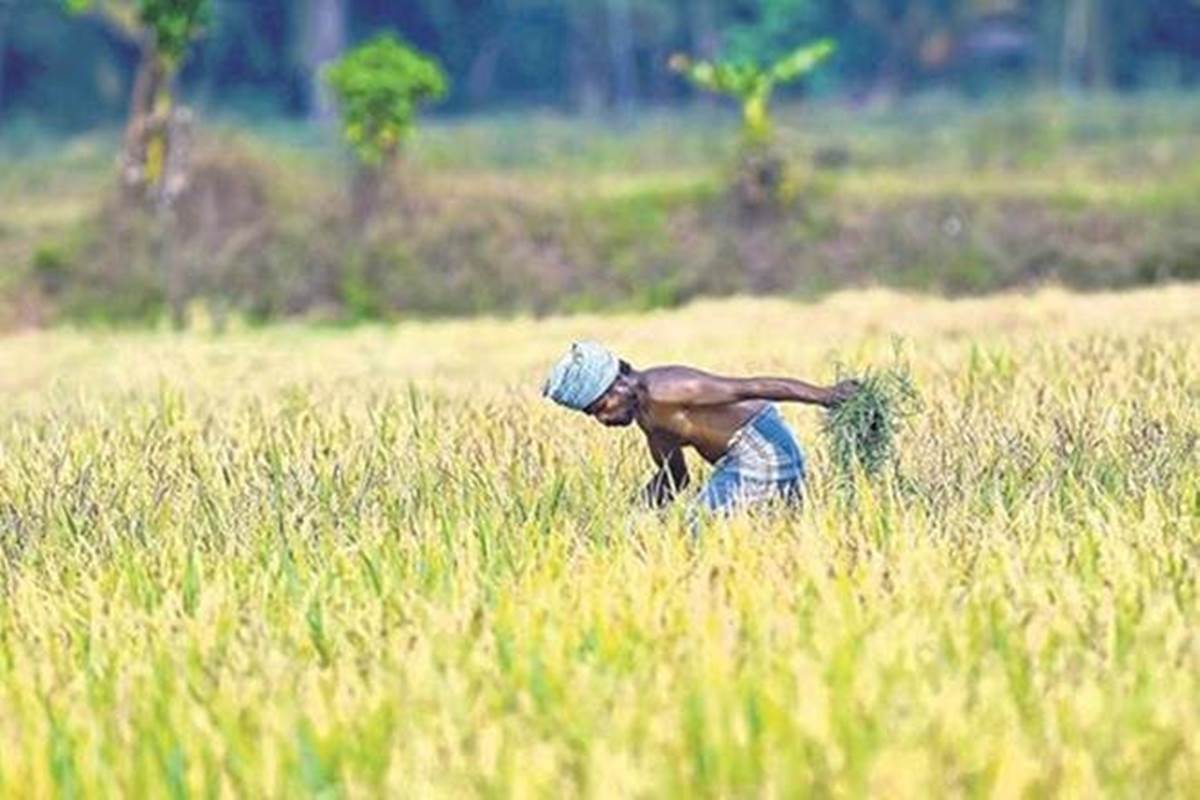PM KISAN
2020 APR 28
Mains >
Social justice > Welfare Schemes > Government Schemes

WHY IN NEWS?
The government has disbursed the first instalment of Rs. 2000 under the Pradhan Mantri Kisan Samman Nidhi scheme (PM KISAN) to 8.89 crore farmers since the lockdown was announced to curb spread of Covid-19.
PRADHAN MANTRI KISAN SAMMAN NIDHI SCHEME (PM KISAN)
- The PM-KISAN IS 100% Centrally sponsored scheme which was launched in 2019.
- The scheme is being implemented by all states except the state of West Bengal, which did not join the scheme.
- When the PM Kisan Scheme was launched 2019, its benefits were admissible only to Small & Marginal Farmers (SMF) families with combined land holding up to 2 hectre.
- The scheme was later revised to extend the benefit to all farmer families irrespective of the size of their landholdings.
- Under the scheme all landholding farmer families will be provided direct income support at the rate of Rs. 6,000 per year.
- This income support will be transferred directly into the bank accounts of beneficiary farmers in three equal instalments of Rs. 2,000 each.
- The entire responsibility of identification of eligible beneficiary farmer families and uploading their correct details on the PM-KISAN portal rests with State/UT governments concerned.
BENEFITS OF PM KISAN
- The direct benefit transfer scheme was aimed at addressing the liquidity constraints of farmers in meeting their expenses for agricultural inputs and services.
- It can also supplement their farm income and has a positive impact on allievation of poverty.
- It can be used in clearing off some of the minor debts and can be used for consumption as required.
- A study undertaken by International Food Policy Research Institute (IFPRI), in association with the Indian Council of Agriculture Research (ICAR) found that with rolling of the PM KISAN scheme there was some considerable uptake in technologies by farmers by associating with Krishi Kalyan Kendras (KKK).
ISSUES WITH THE SCHEME
- According to the Rangarajan report on poverty, for a family of five in a rural area, the poverty line is reflected by a monthly consumption expenditure of Rs 4,860. This implies that this annual income support falls short of covering the Rangarajan poverty line as the monthly support under PM-Kisan is Rs 500.
- Despite of the criticism that the amount is too low to make any substantial impact, the amount is given in instalments which would not be sufficient to be used in agriculture for augmenting inputs nor clear debts.
- A major hurdle faced by the scheme is absence of a proper data base on farmers and landholdings. Many States are yet to digitize their land records and details on the beneficiaries.
- There may be many households who are eligible for the scheme but are not in a position to corroborate their claim with land title.
- Vulnerable agricultural wage labourers and landless farmers are left out by the scheme, making the scheme far from inclusive. In fact, the number of landless farm households is higher than the number of farmers who own land. Such households are without any assets or assured source of income. Thus, the scheme is far from being inclusive.
CONCLUSION
- Rhythu Bandhu Scheme of Telangana and the KALIA (Krushak Assistance for Livelihood and Income Augmentation) of Odisha State are perceived to be precursors for declaration of the farm income support scheme by the Central Government.
- Along with the need of increasing the amount allocated under the scheme there is a need for knowledge and extension support to bring about adoption of new technologies and assets.
- Banking infrastructure created through Pradhan Mantri Jan Dhan Yojana (PMJDY), a government financial inclusion program, played a key role in the funds’ disbursement.
- There should be focus on the following for the proper functioning of the scheme:
- Strengthening IT infrastructure: States with robust computerized land records data base and a good IT infrastructure will be in a better position to implement PM-KISAN. With ICT usage and direct transfer of money to farmers’ bank accounts, pilferage would also be less.
- Proper land records and targeting beneficiaries: Having a proper, updated land records can help in proper targeting of beneficiaries and elimination of fraudulent claims.
- Linkage of Aadhar and big data analytics: Providing benefits through Aadhar linked bank accounts can help in creation of data that can be merged in future with on-ground data on how the benefits are expended etc. It will create a big wealth of data that help in creation of intervention schemes and programs that can benefit the government and farming communities alike.
- If the scheme provides a much more substantial sum it can help in more active intervention in developing technology or inputs and at the same time reduce the debt burden of the farming community, some what in the format of Universal Basic Income (UBI).
Practice Questions
Q. PM KISAN (Pradhan Mantri Kisan Samman Nidhi scheme) is a direct benefit transfer scheme aimed at addressing the liquidity constraints of farmers in meeting their expenses for agricultural inputs and services. Enlist the issues and possible impacts of the scheme.
